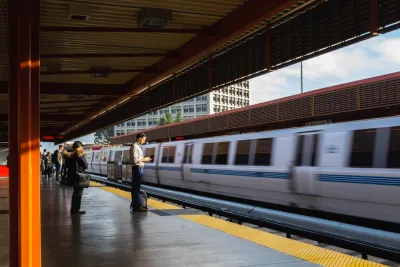A recent study by the Transit app reveals which communications methods are the most and least effective at reaching demographic groups representative of transit riders.

A new report by the Transit app examines the reach of communications channels—e.g., the Transit app, social media, emails, etc.—in reaching transit riders with critical information like service changes, fare payment, and mask mandates. The findings inspire a provocative headline for a blog post explaining the report's findings: "Transit Twitter isn't real life."
When communication channel reach is sorted by income and race in the United States, social media and public meetings fail the equity test of reaching representative populations of riders. Apps, signage, and customer support phone lines, it turns out, are more effective for reaching low-income riders and people of color.
For example, "social media is 3.5x more popular with high-income riders than low-income riders," according to the article. Twitter is the least representative of all: "High-income riders were 7.8x more likely to use Twitter for transit information than low-income riders and 2.1x more likely to use Instagram, whereas Facebook had a near-even split."
The communications findings are a component of the Transit app's larger quarterly Rider Happiness Benchmarking survey, which surveyed 21,000 transit riders across United States about their public transit experience.
A lot more detail on effective, equitable transit communications are included in the source article linked below.
FULL STORY: Transit Twitter isn’t real life

National Parks Layoffs Will Cause Communities to Lose Billions
Thousands of essential park workers were laid off this week, just before the busy spring break season.

Retro-silient?: America’s First “Eco-burb,” The Woodlands Turns 50
A master-planned community north of Houston offers lessons on green infrastructure and resilient design, but falls short of its founder’s lofty affordability and walkability goals.

Delivering for America Plan Will Downgrade Mail Service in at Least 49.5 Percent of Zip Codes
Republican and Democrat lawmakers criticize the plan for its disproportionate negative impact on rural communities.

Test News Post 1
This is a summary

Test News Headline 46
Test for the image on the front page.

Balancing Bombs and Butterflies: How the National Guard Protects a Rare Species
The National Guard at Fort Indiantown Gap uses GIS technology and land management strategies to balance military training with conservation efforts, ensuring the survival of the rare eastern regal fritillary butterfly.
Urban Design for Planners 1: Software Tools
This six-course series explores essential urban design concepts using open source software and equips planners with the tools they need to participate fully in the urban design process.
Planning for Universal Design
Learn the tools for implementing Universal Design in planning regulations.
EMC Planning Group, Inc.
Planetizen
Planetizen
Mpact (formerly Rail~Volution)
Great Falls Development Authority, Inc.
HUDs Office of Policy Development and Research
NYU Wagner Graduate School of Public Service




























